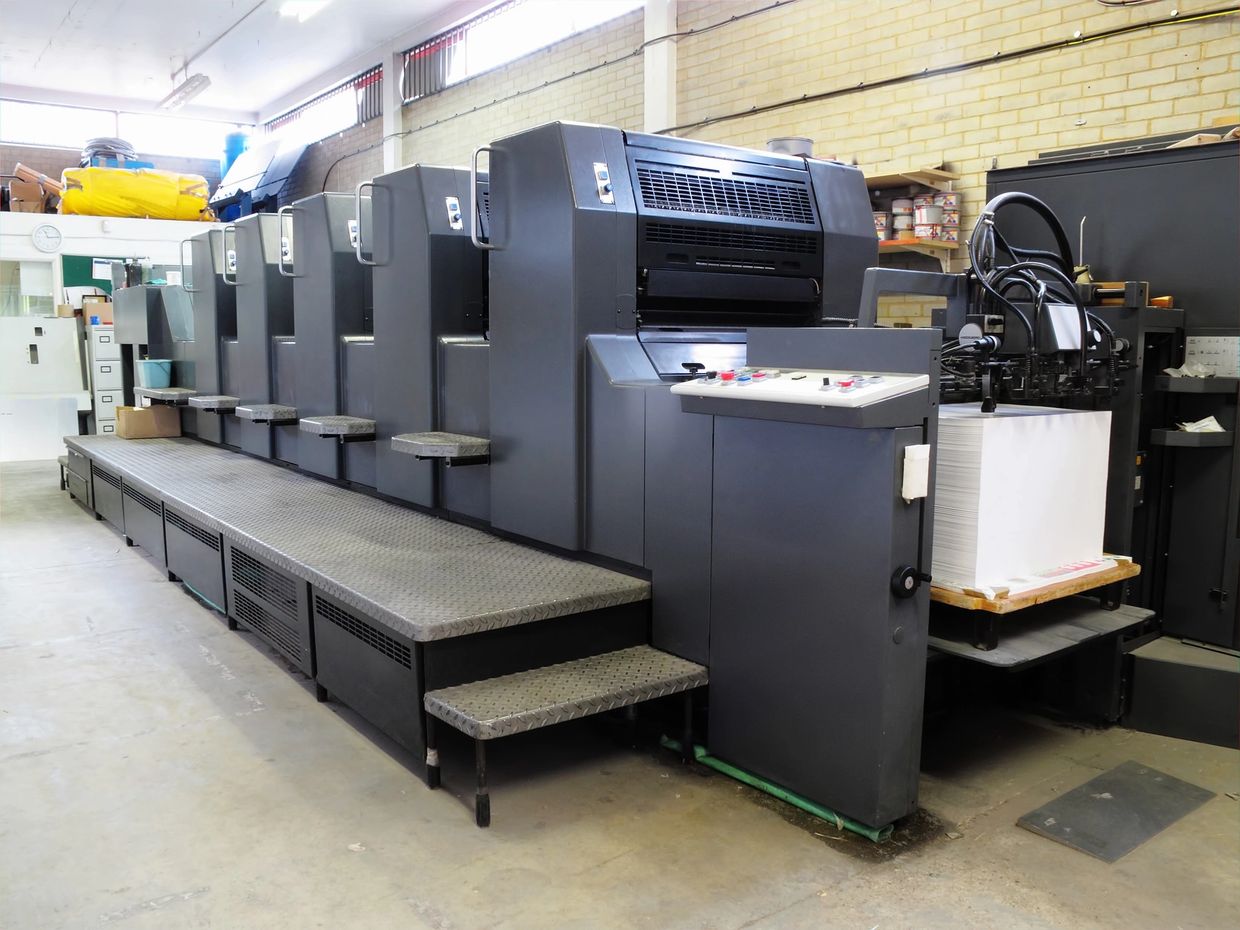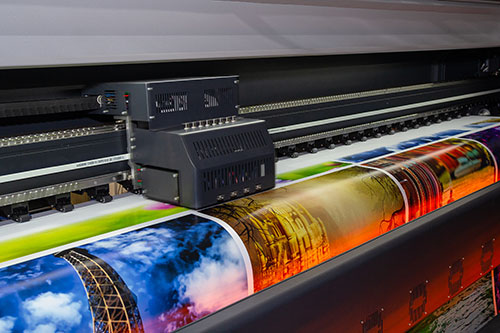Cost-Effective Strategies Using litho printing for Your Next Campaign
The Necessary Overview to Understanding Litho Printing and Its Applications
Litho printing stands as a considerable approach in the printing industry, rooted in the principles of oil and water repulsion. This method not just delivers high-quality photos yet likewise caters to various commercial requirements. Its applications vary from marketing materials to product packaging, showcasing its convenience. As the industry adapts to new innovations, the development of litho printing elevates inquiries about its future and relevance in a digital landscape. What lies ahead for this withstanding technique?

What Is Litho Printing?
Litho printing, a widely used printing strategy, depends on the concept of oil and water repulsion. This approach uses a level printing surface area, normally a steel plate, which is dealt with to ensure that the picture areas are receptive to oil-based inks while the non-image locations repel them. The procedure starts with the development of a picture on the plate, frequently through drawing or photo methods. When the picture is prepared, the plate is dampened with water, followed by the application of ink. The ink sticks just to the picture areas, allowing for precise recreation of graphics and message. Litho printing is favored for its ability to generate top notch prints with fine detail and vivid shades. It is frequently utilized in commercial applications, consisting of papers, magazines, and product packaging, showcasing its convenience and effectiveness in meeting the demands of modern printing.
The Background of Lithography
Although lithography is a modern-day printing staple, its origins map back to the late 18th century when German dramatist Alois Senefelder invented the strategy in 1796. Established as a technique for reproducing messages and images, lithography used a level stone surface area to create prints with a chemical procedure. Senefelder's development permitted for higher flexibility and creative expression contrasted to previous printing methods.By the 19th century, lithography gained prevalent acceptance, coming to be a popular option amongst musicians and publishers. It made it possible for the automation of pictures, maps, and posters, especially impacting the printing market. The strategy further developed with the intro of lithographic presses, boosting efficiency and quality.As the industrial transformation proceeded, lithography adapted to meet the demands of commercial printing, leading the way for modern-day applications. Today, it remains a vital strategy in various fields, including publishing, packaging, and art recreation.
Just How Litho Printing Functions
A vital feature of litho printing is its reliance on the principle of oil and water repulsion - litho printing. In this process, images are transferred from a flat surface, normally a steel or polymer plate, to paper. The plate is treated to ensure that the areas planned for printing attract ink, while the non-image areas repel it due to their affinity for water. The printing starts by dampening the plate with water, which abides by the non-image locations. Consequently, an oil-based ink is used, sticking just to the designated picture areas.When the plate enters contact with the substrate, the ink is transferred, creating a print. The litho printing procedure can creating premium pictures with fine detail. It is frequently used for mass production as a result of its performance and uniformity, making it a favored method for commercial printing applications
Benefits of Litho Printing
One significant benefit of litho printing is its capacity to create top quality photos constantly, making it a perfect selection for industrial projects. This printing approach utilizes a level printing plate, guaranteeing even ink circulation and sharp details. Litho printing is additionally renowned for its color precision, enabling vivid and true-to-life reproductions, which is crucial for branding materials.Moreover, it supports a wide range of substratums, including paper, cardboard, and also certain plastics, improving its versatility. The procedure is cost-effective for big runs, as economies of scale lower per-unit costs. Furthermore, litho printing has a fast turnaround time, permitting for efficient manufacturing schedules.Its durability likewise suggests that printed products stand up to fading, guaranteeing that the last item maintains its visual charm with time. In general, these benefits make litho printing a favored option throughout numerous industries, adding to its enduring appeal.
Applications of Litho Printing in Business
As services increasingly seek trusted and premium printing services, litho printing arises as a principal in numerous applications. This strategy is particularly their website favored for generating marketing materials such as sales brochures, leaflets, and directories, many thanks to its capacity to supply vivid shades and sharp photos. In addition, litho printing is frequently utilized for product packaging solutions, enabling firms to create attractive labels and boxes that enhance item appeal.In the sector of business identity, litho printing contributes in producing professional stationery, business cards, and advertising product, which assist strengthen brand acknowledgment. It is widely used in the posting market for printed products such as publications and magazines, where consistent top quality is vital. Generally, litho printing's flexibility and efficiency make it an essential tool for organizations intending to connect efficiently and establish a solid market existence.
Artistic Use Litho Printing
Litho printing functions as a functional tool in the domain of printmaking, offering artists a distinct technique to reveal their creativity. This method permits a vast array of imaginative applications, from typical prints to contemporary analyses. By exploring the subtleties of litho printing, artists can harness its distinctive top qualities to improve their job.

Printmaking Strategies Summary
The virtuosity of printmaking includes a varied variety of methods, with litho printing standing out for its special approach to image development. This method counts on the principle of oil and water repulsion, permitting artists to attract directly onto a limestone or steel plate with an oily medium. Once prepared, the plate is dampened and tattooed, moving the photo onto paper with stress. Litho printing is commemorated for its capacity to produce fine details and abundant tonal variants, making it a favored selection among artists. Furthermore, the procedure is versatile, accommodating both conventional methods and contemporary adjustments. This flexibility allows pop over here litho printing to bridge numerous imaginative designs, improving the printmaking landscape with its distinctive qualities and abilities.
Special Artistic Applications
Checking out the special imaginative applications of litho printing discloses its impressive versatility in various creative fields. Artists make use of litho printing to develop intricate layouts and appearances, permitting meaningful and thorough jobs. The process helps with the reproduction of brilliant shades, making it ideal for pictures and fine art prints. Lots of contemporary artists embrace lithography for its ability to incorporate typical methods with contemporary ideas, causing cutting-edge art work. Additionally, litho printing is usually used in the production of limited version prints, boosting their value and appeal. The tactile quality of litho prints adds a distinct dimension, attracting collectors and art enthusiasts alike. Overall, litho printing continues to be a considerable medium for imaginative expression, connecting classic approaches with contemporary creative thinking.
The Future of Litho Printing in a Digital Globe
As the printing market develops, litho printing encounters the difficulty of integrating electronic technologies to continue to be appropriate. Strategies concentrated on digital assimilation, together with fads in sustainability and development, will certainly shape its future - litho printing. Recognizing these dynamics is essential for market stakeholders looking to adjust to a rapidly transforming landscape
Digital Integration Techniques
An expanding number of litho printing business are welcoming digital assimilation strategies to remain competitive in an increasingly electronic landscape. By integrating electronic process, these companies can enhance processes and improve performance. This integration permits real-time information monitoring and improved interaction between divisions, lowering turn-around times considerably. Furthermore, digital tools enable better customization and personalization of printed materials, dealing with specific consumer demands. Business are likewise embracing hybrid printing solutions that combine traditional litho techniques with electronic modern technologies, supplying convenience in manufacturing. In addition, leveraging information analytics helps in recognizing market patterns and client choices, permitting services to make educated choices. On the whole, digital integration is ending up being vital for litho printing companies aiming to introduce and reply to advancing market needs.
Sustainability and Advancement Trends

Regularly Asked Concerns
What Products Are Frequently Used in Litho Printing?
The materials commonly made use of in litho printing include light weight aluminum plates, ink, water, and paper. Each component plays an essential function in the printing procedure, guaranteeing high-quality pop over here picture recreation and effective transfer of ink onto the substrate.
Exactly How Does Litho Printing Contrast to Digital Printing?
Litho printing offers exceptional shade uniformity and top quality for huge runs, while digital printing excels in short runs and modification. Each method has distinct advantages, accommodating different needs based on production scale and cost-efficiency.
What Is the Typical Turnaround Time for Litho Printing Projects?
The common turnaround time for litho printing jobs varies, normally ranging from a few days to a number of weeks. Variables affecting this duration consist of job intricacy, quantity, and needed completing procedures, affecting total manufacturing schedules.
Can Litho Printing Accommodate Personalized Sizes and Formats?
Litho printing can without a doubt suit custom sizes and styles, permitting adaptability in style. This adaptability makes it possible for customers to attain unique print outcomes customized to their details demands, boosting the general efficiency of their jobs.
What Are the Environmental Impacts of Litho Printing?
The environmental influences of litho printing consist of resource usage, chemical use, and waste generation. Improvements in lasting practices and eco-friendly materials are gradually decreasing these adverse results, promoting a more ecologically liable approach to printing.